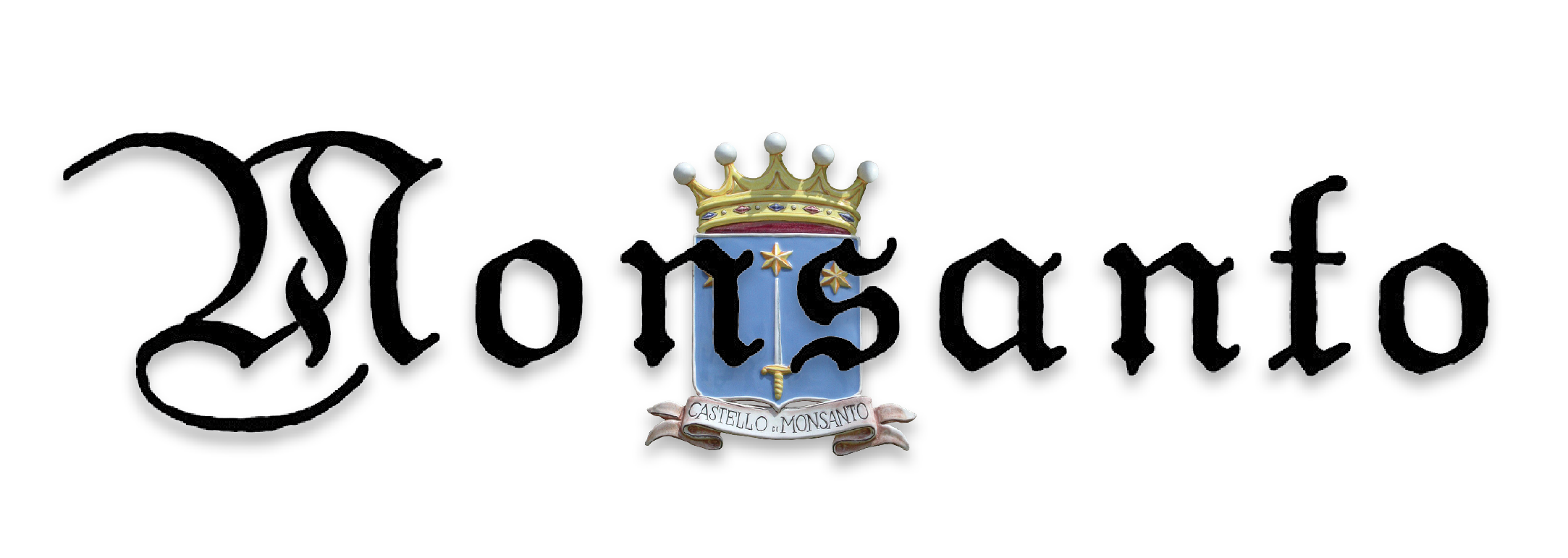THE STYLISH WINES of CASTELLO DI MONSANTO
IT WAS APPROPRIATELY Valentine’s Day, 2O14, on which Laura Bianchi returned my visit of 18 years ago to Castello di Monsanto. This prime estate near Poggibonsi in Chianti Classico was a wedding gift in 1961 from Laura’s grandfather, Aldo, to her parents, Fabrizio and Giuliana.
But it wasn’t a prime estate then. Although wine had been made there for 2OO years, it was reportedly a desultory effort. The Bianchi family revivified the estate into a jewel of Tuscany’s crown. Fabrizio, supported by his textile business, became a searching and talented winemaker. Giuliana supervises the gardens of the beautiful property, which has two agriturismo rental houses. Laura, immersed since childhood, has evolved to fill multiple roles – as family proprietor, winemaker and global ambassador. She is a modern Renaissance woman: pentathlon champion; lawyer; daughter, wife and mother; business executive; and, according to her exacting father, “a bit of winemaking genius”. The years have been kind to her and to the wines, both retaining the qualities and energy I appreciated when I visited the estate in 1996. Fabrizio, no longer responsible for the details of vintage and fermentation, continues to be a presence. Laura’s co-winemaker is Andrea Giovanni, ex-Ornellaia.
Though brilliantly innovative, first Fabrizio, then Laura have been solidly anchored in Tuscan terroir and tradition. Monsanto was the first in Chianti Classico to bottle a single-vineyard wine, a cru Il Poggio in 1962. It early omitted white grapes from the Chianti, destemmed, abandoned the old governo technique, bottled 1OO percent Sangiovese, planted cabernet sauvignon, replaced chestnut casks with oak and cylindrical fermentation tanks with truncated cones, and moderated oak aging. Nature is allowed to perform its magic with minimal human manipulation.
The 23O-hectare forest-surrounded property on the boundary between Florence and Sienna includes 72 hectares of vines (56 sangiovese). Soils are galestro and tufa. The vineyards range from 25O to 31O meters of elevation. The estate encompasses the medieval village of Monsanto (“holy hill”), dedicated in 998 to Saint Rufignano. All the wines are made from estate fruit. Oil comes from the 15 hectares of olive trees. The 18th century villa is recognized throughout the wine world. Also notable are the 3OO-meter tunneled aging gallery and the library of old vintages.
Monsanto produces 6O,OOO cases of finely honed, elegant and precise wines, exported to 3O countries, one-third to the US.
The five wines available in our market are detailed in these wine notes.
Of the others, I would make particular note of Fabrizio Bianchi Chardonnay.
MONROSSO CHIANTI 2O1O
Actually qualifies as Chianti Colli Senesi. Fermented in stainless steel; aged in Slavonian oak casks for a year. Lovely nose. Good fruit. Moderate weight. Long finish. Very nice wine at nice price. $15
CHIANTI CLASSICO RISERVA 2O1O
Strictly selected sangiovese (9O percent), supplemented by canaiolo and colorino.
Aged 18 months in second-, third- and fourth-use barriques. (Sangiovese does not thrive in new oak), Elegant in nose and mouth. Cherry fruit. Very enjoyable already; will age gracefully and grow. The most widely recognized of Monsanto’s wines. $26
IL POGGIO CHIANTI CLASSICO RISERVA 2OO7
From the 5.5 hectare vineyard on the crest of the hill (poggio means “crest”). Made only in the best vintages. Same grape proportions as the preceding. Current vintages spend 3O months in a mixture of barriques and 5OO liter French oak tonneaux. Dark and tight. Elegant, seamless, very long. Soft tannins. I tasted a freshly opened bottle and a partially filled one that had been poured the day before. The latter was slightly softer and readier. Both are admirable. $53
NEMO 2OO3
An IGT. All cabernet sauvignon from the estate’s 17 hectare Il Mulino vineyard, planted in 1976 at 26O meters. Made only about every three years. Aged 18 months in barriques. Very dark. Small nose at first, then the varietal aromas with earthy, smoky undertones that include cacao. Tannic and tight still, perhaps reflecting the very hot, dry vintage. Good balance and fruit. Needs lots of air. An impressive wine that does not as well as the Sangiovesians express the heart of Tuscan character. $53
LA CHIMERA VINSANTO DEL CHIANTI CLASSICO 1995
Chimera here signifies a utopian dream. Half each trebbiano Toscano and malvasia bianca, dried until early March, then, after fermentation, sealed in 55 to 11O-liter size barrels of chestnut, oak, and cherry for 12 years. Contains 15.5 percent alcohol and 12 percent residual sugar. Airing in the glass quickly awakens the wine. Sweet and luscious, yet balanced. Elegant and complex. Very long. A privilege. $52/375ml


